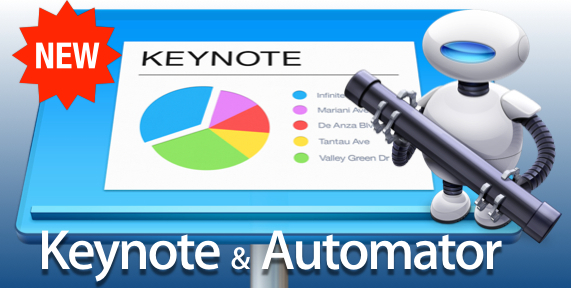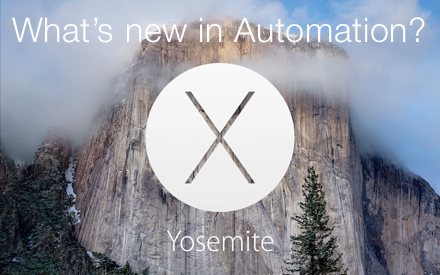Presentations range from the passionate plea to the dispassionate display of “just the facts.” But for those tasked with producing detailed dispositions, or for those who just want to quickly visualize concepts, automation is the essential tool for connecting data to display, making Keynote’s AppleScript support the power-tool for the “professional persuader.”
Why Automate?
As anyone who succeeds in the world of office and creative productivity can tell you, automation is an absolutely essential tool for maintaining sanity. When processes are automated, you gain:
- Speed. It takes less time to accomplish complex multi-step procedures.
- Accuracy. With automation, the chances of making mistakes because of human error are minimized.
- Consistency. Automation produces data of reliable quality.
- Scalability. If you want to do more, in a shorter time, while maintaining quality, automation is the best way to increase the productivity of your business.
Using automation frees you from the “drudge work,” to focus on the creative and analytical aspects of what you do — you know, that stuff you were actually hired and like to do! And when it comes to the world of automation, AppleScript is your best friend.
So, if you are currently using another presentation application for your work and are interested in seeing what Keynote can do; or are a Keynote user who wants to take the application to the next level of functionality; automating Keynote with AppleScript is something you should explore.
What is covered in this overview of Keynote AppleScript support?
The following pages describe and demonstrate how AppleScript can be used to access, query, control, make, style, and delete the elements of the Keynote application, with specific focus on documents and page elements.
If you are familiar with AppleScript — great. If not, no problem. You can easily pick up this unique English-like scripting language from the tutorials on this website, or from reading one of the many great AppleScript books on the subject, including Apple’s own AppleScript 1-2-3 (on the iBooks Store).
And everything you need to automate Keynote with AppleScript is already installed in OS X. For starters, all of the example scripts on these pages can be viewed in the AppleScript Editor application (which can be found in your Utilities folder) automatically, by just clicking the Open in AppleScript Editor button located above each of the example scripts, that are placed inline throughout the documentation on this site.
So what are you waiting for? Use the purple navigation box on the upper right side of this page to begin the process of becoming “The Great Persuader!”
Much of the scripting support from Keynote 2009 has been preserved by moving it into the Keynote 2009 Compatibility Suite. This scripting suite is a revision based upon the original scripting terminology of the Keynote 2009 release.
Some scripts written to work with Keynote 2009 will work with Keynote 6.2, with the exception of scripts that address features in the older version that are not in the latest version. Likewise, there are a few scripting features in the latest version that are not present in older versions of the application. These exceptions are noted in the following documentation.



